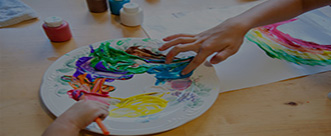Our team of experts includes behavior specialists, speech pathologists, occupational therapists and skill development coordinators. All our therapists and tutors works in collaboration to help children reach their maximum potential.
Contact UsWhat Is Autism?
Autism spectrum disorder (ASD) and autism are both general terms for a group of complex disorders of brain development. These disorders are characterized, in varying degrees, by difficulties in social interaction, verbal and nonverbal communication and repetitive behaviors. With the May 2013 publication of the DSM-5 diagnostic manual, all autism disorders were merged into one umbrella diagnosis of ASD. Previously, they were recognized as distinct subtypes, including autistic disorder, childhood disintegrative disorder, pervasive developmental disorder-not otherwise specified (PDD-NOS) and Asperger syndrome. ASD can be associated with intellectual disability, difficulties in motor coordination and attention and physical health issues such as sleep and gastrointestinal disturbances. Some persons with ASD excel in visual skills, music, math and art.
Autism now affects 1 in 68 children and 1 in 42 boys.
Autism prevalence figures are growing.
Fastest-growing developmental disorder in the U.S.
It costs a family $60,000 a year on average.
Boys have better chances of being autistc than girls.
There is no medical detection or cure for autism.

What causes Autism?
Not long ago, the answer to this question would have been "we have no idea." Research is now delivering the answers. First and foremost, we now know that there is no one cause of autism just as there is no one type of autism. Over the last five years, scientists have identified a number of rare gene changes, or mutations, associated with autism. A small number of these are sufficient to cause autism by them. Most cases of autism, however, appear to be caused by a combination of autism risk.
Symptoms of autism
Social-interaction difficulties
People on the spectrum have difficulty establishing and maintaining relationships.
Repetitive Behaviors
Hand-flapping, finger-flicking, rocking, spinning or twirling and head-banging.
Communication Challenges
People with ASD often have communication difficulties in one form or another.
Difficulty Recognizing Nonverbal Cues
Difficult to interpret facial expressions, body postures and tone of voice.
Odd Movement Patterns
Excessive rocking combined with odd finger and hand mannerisms.
Performs Activities that Cause Self-harm
Hand-biting, head-banging, hitting fists on self or objects and excessive picking.



